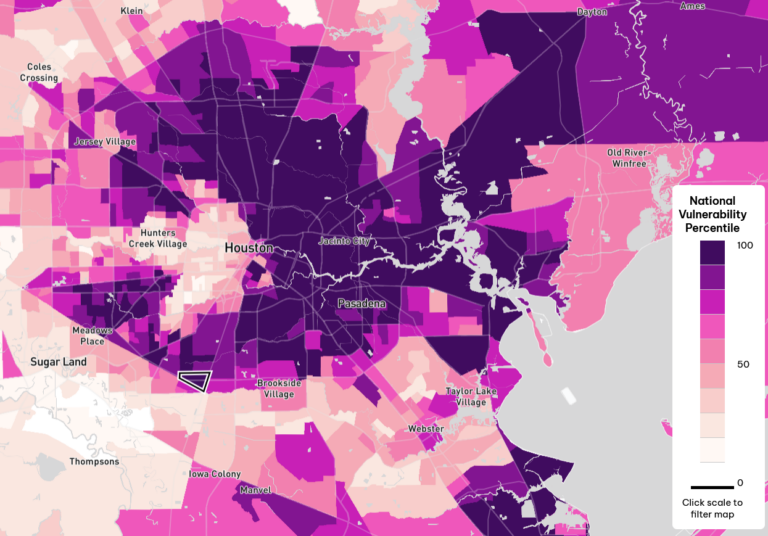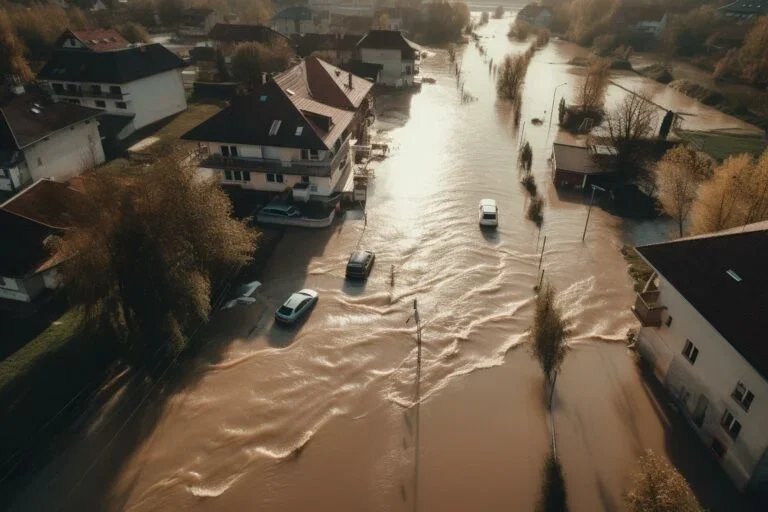Last Monday, Environmental Defense Fund and Texas A&M University unveiled the Climate Vulnerability Index (CVI), a robust, data-driven mapping tool built to highlight how drivers of cumulative vulnerability and exposure to climate impacts disadvantage communities across the U.S. Combining 184 sets of data, or “indicators,” to rank more than 70,000 U.S. Census tracts, the CVI offers the most complete look at lived experience down to the neighborhood level.
With the Biden Administration’s Justice40 Initiative and executive order for climate justice, we have a historic opportunity to tackle decades of systemic neglect in low-income neighborhoods and communities of color, and help level the playing field by directing resources to build climate resilience and adaptability. By pinpointing long-term health, social, environmental and economic conditions behind inequities across the U.S., this new mapping tool helps define where investments are needed most.
While our research paper on this topic presented a great deal of interesting findings, data from the CVI will be most useful directing the equity-focused funding from more than $1.5 trillion in investments from recent legislation, including the Inflation Reduction Act (IRA), Bipartisan Infrastructure Law (BIL), and Creating Helpful Incentives to Produce Semiconductors and Science Act (CHIPS).
The IRA is a monumental climate bill anticipated to drive nationwide emissions to 40% below 2005 levels by 2030 – nearly achieving the Paris Agreement target of 50%. Of the more than $430 billion in direct investments being mobilized, our study estimated that a significant portion of these can lead to improvements in baseline vulnerabilities (43%) and climate risk outcomes (84%) for communities.
According to Credit Suisse, the leveraged impact of IRA investments is expected to be much larger and reach nearly $1.7 trillion – largely due to private sector investment, subsidized lending, and uncapped incentives.
However, for this historic level of funding to improve equity outcomes and build resilience in vulnerable communities, investments must flow to the right places.
The CVI was primarily developed to support communities and policymakers. It provides community-based organizations access to actionable data that can help them take advantage of grant opportunities for reducing disparities in their communities and advocate for increased action and funding. The CVI gives policymakers a means to define where investments are needed most to protect vulnerable communities against climate impacts, via decision-making, policy development, and community-level planning among others.
Moreover, we see a great deal of potential academic research and strategic advocacy uses for the tool across a variety of disciplines. The extensive evaluation of data sets led to an important recognition where comprehensive data are lacking, such as potential effects of climate on health, data related to tribal lands and populations, water quality, maternal and child health outcomes, and more. The CVI can highlight and elevate these gaps, leading to much-needed research in these areas.
EDF’s Economics program is also exploring ways to drive equitable decision making by integrating CVI data into benefit-cost analyses. And in the policy realm, we’re using the CVI to assess and understand equity impacts of proposed regulations to advocate for better policies. If you are interested in collaborating with us on research ideas utilizing the CVI to build toward equity and climate justice, please don’t hesitate to reach out.
Learn more and explore the CVI at climatevulnerabilityindex.org. In the Resources section, you can access a comprehensive list of current and forthcoming IRA, IIJA, and Justice 40-related resources and grant funding opportunities.











